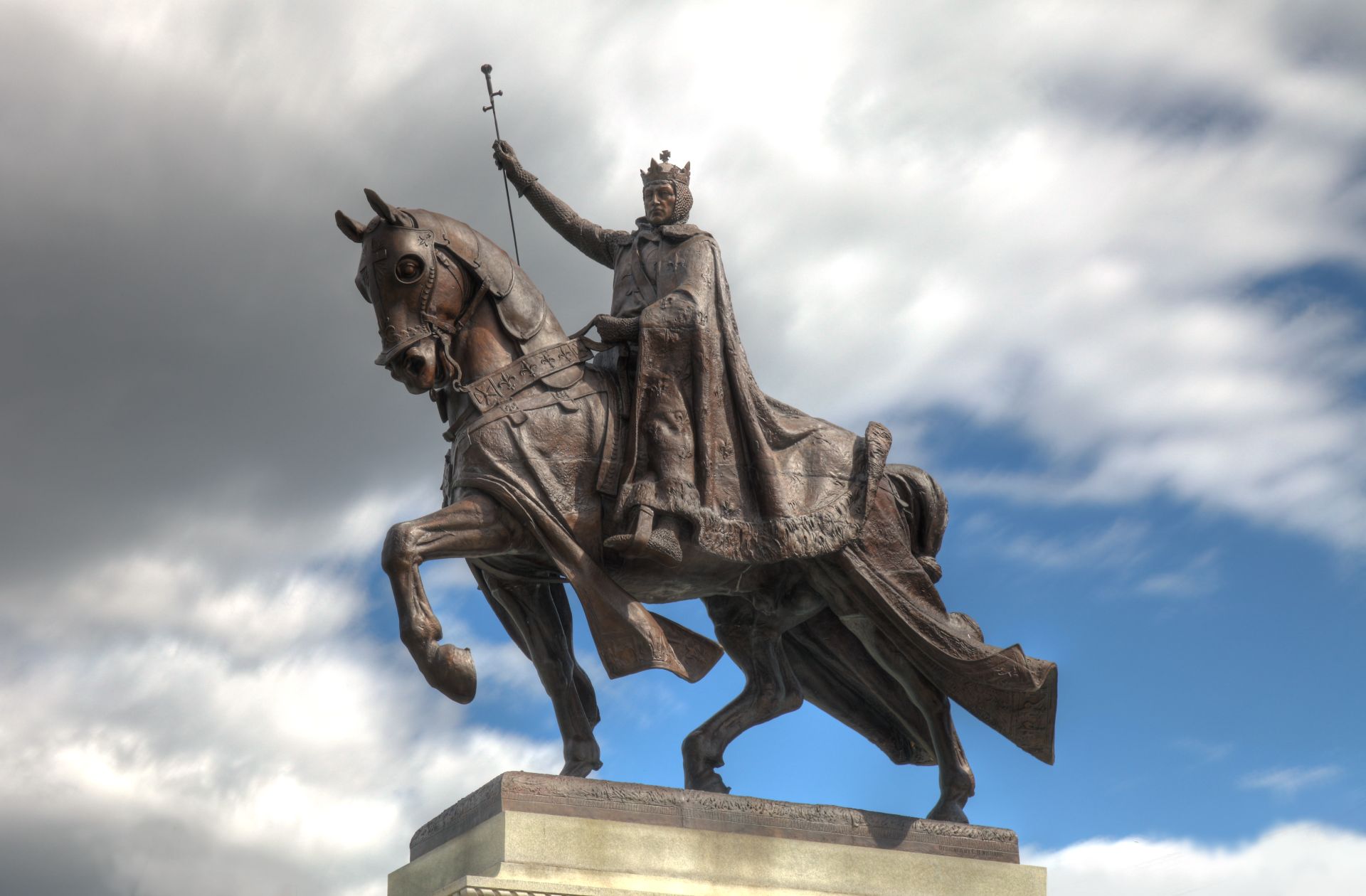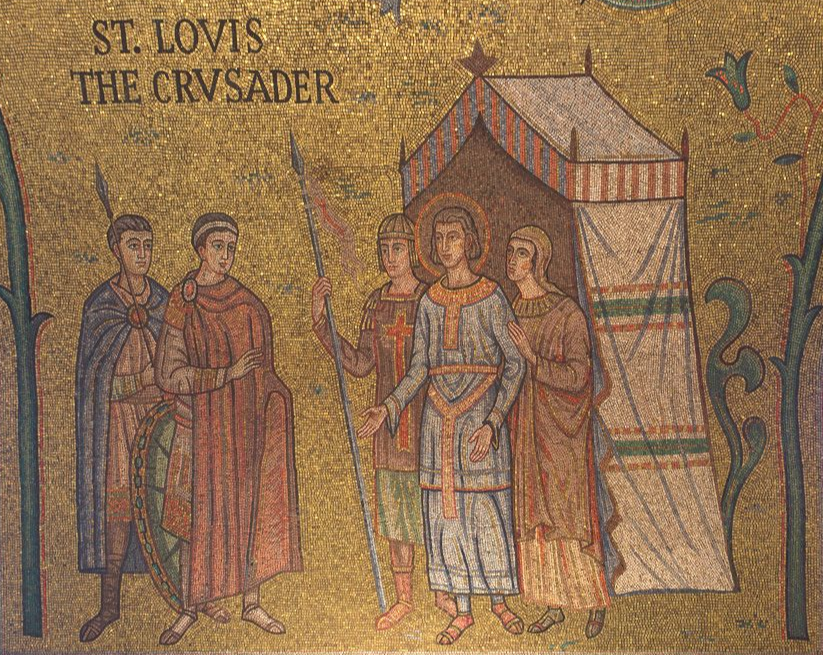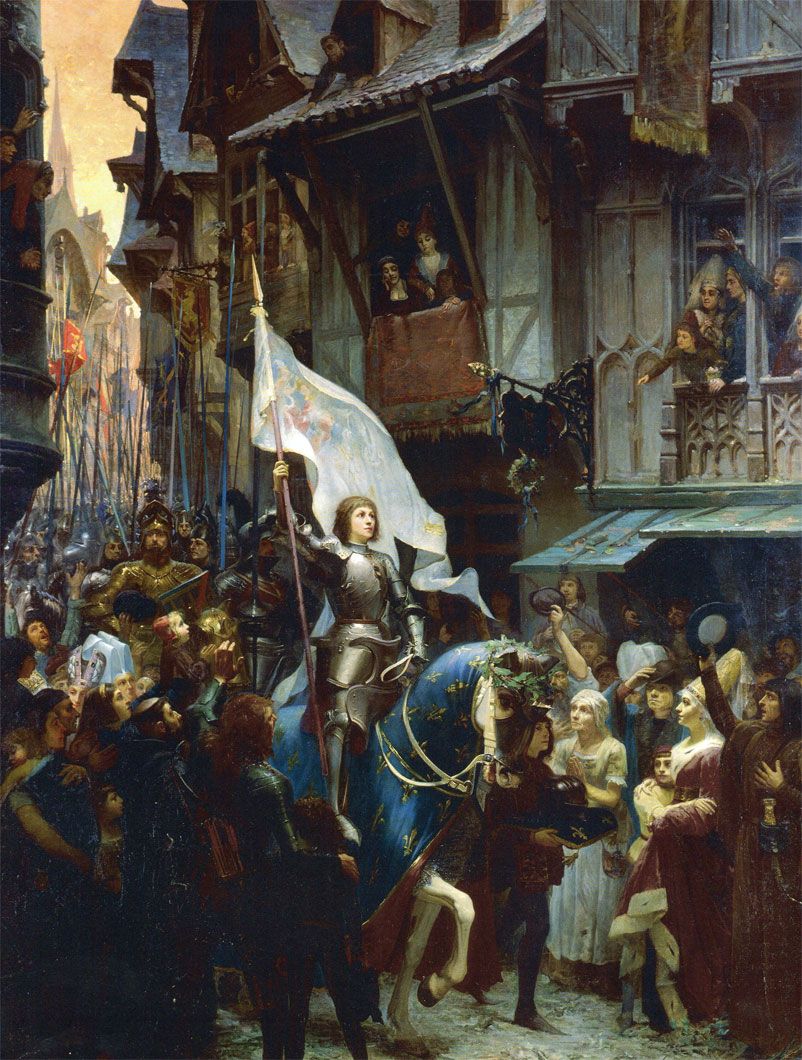
Aug 21
Warrior Saints of France
As the Book of Ecclesiastes says, there is "a time to love, and a time to hate; a time of war, and a time of peace." With a history stretching across two millennia, there have been many times of war for Catholic France. While wartime might not seem favorable to the cultivation of holiness, God chooses men and women of all walks of life to serve him, soldiers not excepted. This is demonstrated by the lives of two famous warrior saints of France.

St. Louis IX is the only king of France who is a canonized saint. He reigned from 1226 to 1270, during which time he used his royal power to care for the poor, promote education and orthodoxy, and administer justice in his kingdom. He was well known across Catholic Europe for his piety and virtue. But he could not fulfill his vocation to maintain peace in France without also being a man of war. St. Louis successfully exercised the power of the sword against rebellious nobles, troublesome heretics, and invading English armies.

St. Louis' best-known military exploits were in two crusades against the Muslim forces that controlled much of the Holy Land, made it dangerous to go on pilgrimage to Jerusalem, and threatened the entire Christian world. He planned his first crusade painstakingly, and in the beginning it seemed to be going well. But disaster struck in Egypt, including plague, and Louis himself was captured and had to be ransomed. Even so, the first of Louis' crusades was an overall success. The Christian position was strengthened in the Holy Land, though much of it was still under Muslim control, and Louis returned to France. But he long remained anxious about the Muslim advances in the Holy Land, and nearly twenty years later, he launched another crusade. This time, however, he was already weakened by illness. When disease once again struck his army, the great Christian king of France died and was immediately acclaimed a saint.

Neither a man nor a noble, St. Joan of Arc would not have seemed like a promising candidate for military glory on behalf of the Eldest Daughter of the Church. However, through God's grace she became just as renowned for her holiness and achievements on the battlefield as St. Louis. Joan was born into a peasant family in 1412. France was now in the midst of the Hundred Years' War, a conflict with England that had grown out of the same territorial disputes that Louis IX had been dealing with more than a century before Joan's time. While still a teenager, Joan received apparitions of saints and angels that convinced her that God was calling her to fight on behalf of her homeland. It was more difficult to convince the nobles and uncrowned king of France, but once they allowed Joan to lead an army, she won a great victory at the Battle of Orléans.

Joan's extraordinary courage and sense of divine mission saved France from English conquest and made it possible for Charles VII to be crowed in Rheims Cathedral. Her piety, toughness, and shrewd leadership inspired the French nobles, soldiers, and ordinary men and women. While she did win more victories, she also encountered setbacks and was not always supported wholeheartedly by the king for whom she fought. Within a year she was captured, tried, and burned at the stake by allies of the English, who falsely painted her as a heretic. However, she was rehabilitated by the pope several decades after her death and became an enduring national hero of France, ultimately being canonized in 1920.
From kings to peasant girls, God can use all people to achieve his purposes, despite trials and tribulations, in battles both literal and spiritual. If you're intrigued and want to learn more about the story of Catholic France, enroll in LANE's fall 2023 class, Our Lady and the Eldest Daughter of the Church!
— Cory Lakatos, LANE Director of Communications
From kings to peasant girls, God can use all people to achieve his purposes, despite trials and tribulations, in battles both literal and spiritual. If you're intrigued and want to learn more about the story of Catholic France, enroll in LANE's fall 2023 class, Our Lady and the Eldest Daughter of the Church!
— Cory Lakatos, LANE Director of Communications

A Ministry of Our Lady of the Lake Catholic Church
480 152nd Avenue, Holland, MI 49424
lanecatholic@oll.org
Privacy Policy and Terms of Use
Copyright © 2025